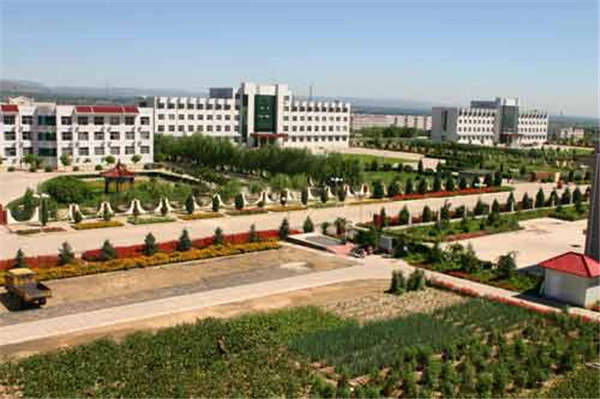Huai'an County is located in the western part of Hebei Province, at the junction of the three provinces (districts) of Jin, Hebei and Mongolia. The county seat is bordered by Xuanhua County in the east, Yangyuan County in the south, Tianzhen County in Shanxi in the west and southwest, Shangyi County in the northwest, and Yanghe and Wanquan County in the north, with a total area of 1,706 square kilometers, an area of 6.98 million mu of arable land, a total population of 243,000 people, and 273 administrative villages in 11 townships and towns, including 20 ethnic minorities such as Mongolian, Tibetan and Uyghur. In 1994, Huai'an County was awarded the title of "Model County of Double Support" by the CPC Hebei Provincial Committee and the People's Government of Hebei Province. The Yinshan Mountains in the county are traversed, with mountains, ravines, and ancient roads, which are the main roads leading to the northwest. During the war years, "Outer Border Plug, Inner Screen Kyoto" was an important military strategic fortress in history.
Huai'an County is located on the edge of the mountains of northern Hebei, between the Inner Mongolia Plateau and the North China Plain, with extended mountain ranges, undulating terrain, serious soil erosion, sparse natural vegetation, and serious soil erosion, and belongs to the East Asian continental monsoon climate. Spring is dry and windy, and there are nine droughts in ten years. Summer and autumn are hot and rainy, and the amount of rain is concentrated, often accompanied by floods, thunder, and wind and sand.
The revolutionary struggle was extremely arduous
In July 1937, the Japanese army launched a full-scale invasion of China. For the sake of the overall consideration of the Japanese strategic offensive, on July 13, Japanese aircraft bombed Chaigou Fort, an important town on the Pingsui Railway, and on August 29, the independent mixed brigade of the Japanese Kwantung Army occupied Chaigou Fort. On September 4, Huai's safety situation fell. During this period, the Japanese invaders brutally slaughtered and created the horrific "Wangjiayao Massacre", in which 34 women and children were killed; In the city of Huai'an, the "half of the poor" massacre was committed, and 9 Chinese compatriots were shot and killed. The Japanese and the puppets established reactionary rule, set up 18 pseudo-large townships in the county, established the baojia system, and in April 1941, the two counties of Huai'an and Wanquan were merged to be called Wan'an County. During the War of Resistance Against Japan, the county injured 138 people, blew up 149 houses, and suffered direct economic losses of 8.27 million US dollars.
The Japanese and pseudo-reactionary rule could not frighten the heroic people of Huai'an, and along with the clarion call of the Anti-Japanese Counteroffensive, the people's armed forces led by the Communist Party of China came to Huai'an. On December 20, 1944, the Jin-Cha-Ji Branch of the Communist Party of China instructed the establishment of the Huai'an Working Committee. In April 1945, the Pingxi Prefectural Committee officially announced the Huai'an Working Committee of the Communist Party of China and the Huai'an Office. The organs were successively stationed in the areas of Dayaozishui, Steep Slope, and Xinyao, and the first rural party branch in the county was established in Xihuapiling Village, with Wang Wanjin as the first secretary of the party branch. Since then, under the leadership of the Communist Party of China, the people of Huai'an have begun an organized and led anti-Japanese struggle until August 15, 1945, when Japan unconditionally surrendered and huai'an was liberated.
After Japan's surrender, the Kuomintang reactionaries launched a full-scale civil war, and the people of Huai'an actively joined the army and fought bravely to defend the fruits of the victory of the War of Resistance. In the face of the white terror of the Kuomintang reactionaries, the evacuated county and district cadres, under the leadership of Bai Huamin, secretary of the county party committee, and Jiang Tao, the county magistrate, returned to Huai'an, adopted the method of combining centralization and dispersion, and negotiated with the enemy for a long time, suppressing 12 criminal elements who resolutely made enemies of the people and cracking down on the reactionary arrogance of the enemy. At the beginning of 1947, according to the decision of the Jin-Cha-Ji Military Region, the Tianyanghuai Detachment was formed, and the Tianyanghuai Detachment experienced more than 100 battles, including Baiyuzhuang and Jiajiatun 12 famous battles, annihilating more than 1,000 enemy troops, and the detachment team grew to more than 1,000 people. In November 1948, the Second Column of the Third Corps of the North China Field Corps liberated Huai'an with the cooperation of local armed forces, and the people were reborn. In the protracted revolutionary struggle, the Huai'an military and civilians made great sacrifices for liberation. In 1947 alone, more than 100 cadres and fighters of our party were captured and more than 30 people were killed.

Huai'an County Martyrs Cemetery